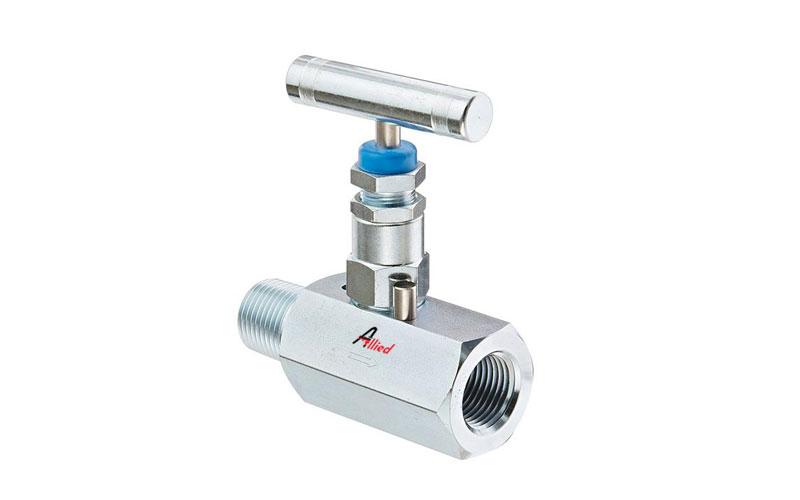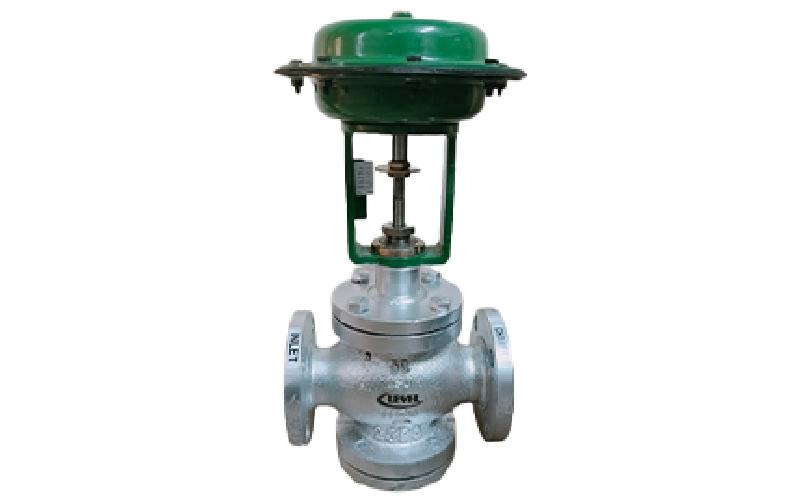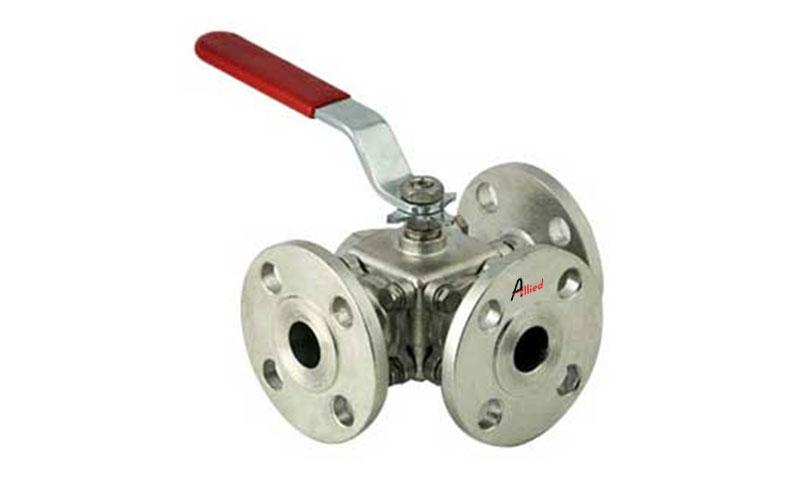Comparative Analysis: Hand Lever vs. Other Control Mechanisms in Pneumatic Valves
Pneumatic valves play a crucial role in controlling the flow of air or gases in various industrial applications. Understanding the control mechanisms employed in these valves is essential for optimizing their performance. Here's a brief overview:
Direct Acting Valves: These valves operate directly in response to the control signal, making them fast and reliable.
Pilot Operated Valves: Utilize a smaller pilot valve to control the larger main valve, offering enhanced control over flow rates and pressure.
Solenoid Control: Commonly used for automated systems, solenoids provide precise control by converting electrical signals into mechanical motion.
Manual Control: Some pneumatic valves feature manual control mechanisms, such as hand levers or knobs, allowing for manual operation when needed.
Understanding these control mechanisms is crucial for selecting the right pneumatic valve for your application needs. For top-quality hand lever operated pneumatic valves, consider exploring offerings from the leading manufacturer in India.
Understanding Hand Lever Operation: Pros and Cons
Hand lever operated pneumatic valves offer a simple and efficient way to control air pressure in various industrial applications. But are they the right choice for your needs? Let's explore the pros and cons:
Pros:
Simplicity: Easy to operate, requiring no electrical connections or complex controls.
Cost-effective: Lower initial cost compared to automated valves.
Durable: Built to withstand harsh environments and frequent use.
Precise control: Manual operation allows for fine-tuning air pressure.
Safety: Can be shut off quickly in emergency situations.
Cons:
Limited control: Relies on manual operation, offering less precise control than automated options.
Fatiguing: Continuous operation can lead to fatigue for the operator.
Not ideal for remote locations: Requires physical access to the valve.
For reliable and high quality hand lever operated pneumatic valve, consider Airmax Pneumatic, a leading manufacturer in India. We offer a wide range of valves for diverse industrial applications, ensuring you find the perfect solution for your needs.
Exploring Other Control Mechanisms: Electric vs. Solenoid
When it comes to precise control in industrial applications, choosing the right mechanism plays a crucial role. Two popular options are electric and solenoid actuators, each with distinct advantages and drawbacks. Let's delve into their key differences:
Electric Actuators:
Pros:
Precise control over speed and position
Quiet operation
Suitable for harsh environments with temperature variations
Can be easily integrated with control systems
Cons:
Higher initial cost than solenoids
May require complex wiring and control systems
Limited force output compared to some solenoids
Solenoid Actuators:
Pros:
Simple design and installation
Cost-effective
High force output for their size
Reliable and fast operation
Cons:
Limited control over speed and position
Can be noisy
Susceptible to temperature variations
Not suitable for applications requiring precise control
If you require pneumatic valves with hand lever operation, Airmax Pneumatic, a leading Top Hand Lever Operated Pneumatic Valve Manufacturer in India, offers a wide range of reliable and robust solutions. Contact us today to discuss your specific needs and find the perfect control mechanism for your application.
Performance Comparison: Hand Lever vs. Electric Control
Choosing the right control mechanism for your pneumatic valves is crucial for optimizing performance and efficiency. Here's a quick comparison of hand levers and electric controls to help you decide:
Hand Levers:
Simple and cost-effective: Ideal for basic operations and lower budgets.
Direct control: Offers immediate response and tactile feedback.
No external power required: Reliable in areas with limited electricity access.
Physically demanding: May require significant operator effort for frequent actuation.
Limited precision: Prone to operator fatigue and potential control inconsistencies.
Electric Controls:
Precise control: Enables adjustable speed, force, and position control.
Remote operation: Offers flexibility for controlling valves from a distance.
Reduced operator fatigue: Minimizes physical effort for repetitive tasks.
Higher complexity and cost: Requires additional electrical infrastructure and maintenance.
Potential vulnerability to power outages: May disrupt operations in case of power failures.
For applications requiring frequent actuation, precision control, or remote operation, electric controls shine. However, for straightforward applications with limited budgets and reliable access to manual labor, hand levers remain a solid choice.
Efficiency Analysis: Hand Lever vs. Solenoid Control
Choosing the right control mechanism for your pneumatic valve is crucial for optimizing efficiency. Let's compare hand levers and solenoids:
Hand Levers:
Simple and cost-effective: Ideal for manual control in readily accessible locations.
Fast response: Immediate actuation and control over force application.
No external power required: Operates independently, even in power outages.
Durable and low maintenance: Requires minimal upkeep.
Solenoid Valves:
Automated control: Integrates seamlessly with control systems for remote operation.
Precise control: Offers various actuation speeds and control options.
Faster actuation times: Suitable for high-speed applications.
Reduced manual effort: Minimizes operator fatigue, particularly for repetitive tasks.
To explore high-quality hand lever operated pneumatic valves, consider Airmax Pneumatic, a leading manufacturer offering diverse solutions for various industrial needs.
Response Time Evaluation: Hand Lever vs. Other Mechanisms
The choice between a hand lever and other activation mechanisms for pneumatic valves heavily impacts system response time. Here's a breakdown:
Hand Levers:
Pros:
Fast actuation: Immediate response with minimal travel distance.
Tactile feedback: User feels engagement for precise control.
Simple design: Easy to install and maintain.
Cons:
Limited force: May not be suitable for high-pressure applications.
Ergonomics: Prolonged use can lead to fatigue.
Other Mechanisms:
Pushbuttons: Easy to operate but lack precise control and feedback.
Foot pedals: Free hands but require body movement, affecting speed.
Solenoids: Electrically controlled, fast response, but complex and require external power.
Consider factors like application demands, user comfort, and response time requirements. For demanding applications where fast, precise control is crucial, a hand lever from a top manufacturer like Airmax Pneumatic, a leading hand lever operated pneumatic valve manufacturer in India, might be the optimal choice.
Durability and Reliability: Hand Lever vs. Electric and Solenoid
Choosing the right valve for your operation depends on more than just function. Durability and reliability are crucial factors, especially in demanding environments. Let's compare hand lever, electric, and solenoid valves across these key aspects:
Hand Lever Valves:
Durability: Simple construction often translates to longer lifespans, less prone to wear and tear from electrical faults or complex mechanisms.
Reliability: Manual operation eliminates dependence on external power sources, ensuring valve function even during power outages.
Considerations: Requires physical effort to operate, potentially limiting cycle frequency or suitability for continuous operations.
Electric Valves:
Durability: Can be less resistant to environmental factors like dust or moisture compared to hand lever valves.
Reliability: Dependent on a consistent power supply and electrical components, increasing potential failure points.










Comments